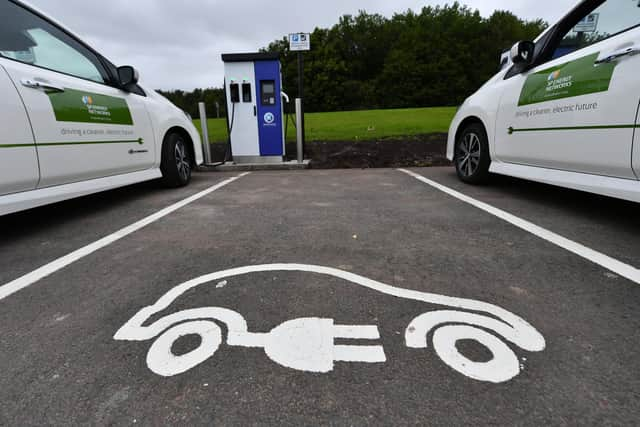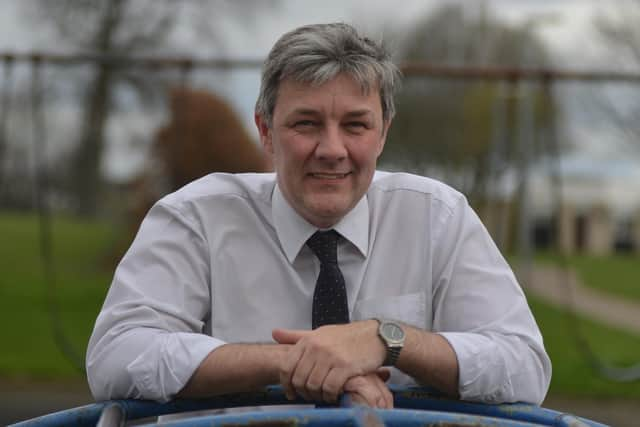Fife steps up work for network of electric vehicle charging points as demand set to rise
and live on Freeview channel 276
Estimates suggest up to 100,000 people in Fife alone will be driving EVs by the time the ban on petrol and diesel vehicles comes into force in 2030, with Transport Scotland projecting there will be between 500,000 and one million users across Scotland by the turn of the decade.
However, while local authorities have admitted the scale and pace of investment in public EV charging infrastructure needs to be accelerated to meet this growing demand, Fife Council share Transport Scotland’s view that it is “unsustainable” for the public sector to meet this challenge on its own.
Advertisement
Hide AdAdvertisement
Hide AdWith that in mind, Fife Council is expected to produce its own EV strategy later this year to outline its plans, although councillors on the economy, tourism, strategic planning and transportation sub committee heard on Thursday how equitable access to the network, regardless of location, will be central to the region’s approach.


So while that will aim to build on the council’s own infrastructure, partnering with the private sector wherever possible will also be crucial to the future expansion of EV charging facilities Fife-wide.
Committee convener Councillor Altany Craik welcomed the work done to date on considering the region’s existing EV charging infrastructure but described an update before councillors as a “starter for 10”.
“Given that 30% of Fifers don’t have access to a car, I think there’s a long way to go,” he said.
Advertisement
Hide AdAdvertisement
Hide Ad

“It is a very movable feast and we’re going to have to work with local partners on this but the council has a very important role to play.”
The existing ‘eFife’ EV public charging network - which provides 115 plug-in points across 37 locations - was planned with charging points spaced approximately 10 miles apart to help facilitate top-up charging, with the presumption being the predominant charging location would be at the owner's home.
A tariff system for EV charging points in Fife Council public car parks was then introduced in 2020, but that will need to be revised in the near future as electricity costs continue to spiral.
Similarly, there are more than 60 chargers across 39 locations being operated by private providers, all costing various amounts, and that number will also need to increase to meet demand in the run-up to 2030.
Advertisement
Hide AdAdvertisement
Hide AdFrom Fife Council’s point of view, councillors heard that housing services are taking the proactive step to ‘future proof’ new developments by installing ducting in car parking areas to incorporate further future expansion in EV charging facilities.
Work is also ongoing with private developers and other registered social landlords through the planning process to improve EV charging provision where possible.
Councillor Jane Ann Liston welcomed that news, adding: “That’s exactly the sort of thinking that’s needed in this council.”
Questions still remain moving forward, however, with Councillor Mino Manekshaw pointing out the prohibitive costs of EVs and infrastructure for both residents and commercial enterprises.
Advertisement
Hide AdAdvertisement
Hide AdCouncillor Ian Cameron also queried if Fife Council was “backing the wrong horse”, noting that hydrogen technology was growing in popularity and did not require the same sort of infrastructure that EVs do.
“There’s so many fragmented things here that need pulled together, and we need to have a bigger understanding of what the impact of this is going to be,” he said.
Ken Gourlay, head of assets, transportation and environment, acknowledged all the concerns raised but admitted: “I think it is a work in progress and it’s going to be a challenge because with a lack of information more widely, folk are going to come to us for solutions.
“We don’t have all the answers at this particular time.”
Further guidance on EV networks is expected from the Scottish Government later this year, while the Scottish Government’s new public electric vehicle charging funding programme will provide up to £60 million to local authorities over the next four years from 2022 to 2026,
Advertisement
Hide AdAdvertisement
Hide AdHalf of that cash will come from the Scottish Government, with the remaining £30 million anticipated to be invested from the private sector.
This funding programme will replace the current Local Authority Installation Programme, which grant funds all local authorities for hosting and maintaining charging infrastructure to support the development of Charge Place Scotland, the national network of EV charge points across urban and rural locations.
